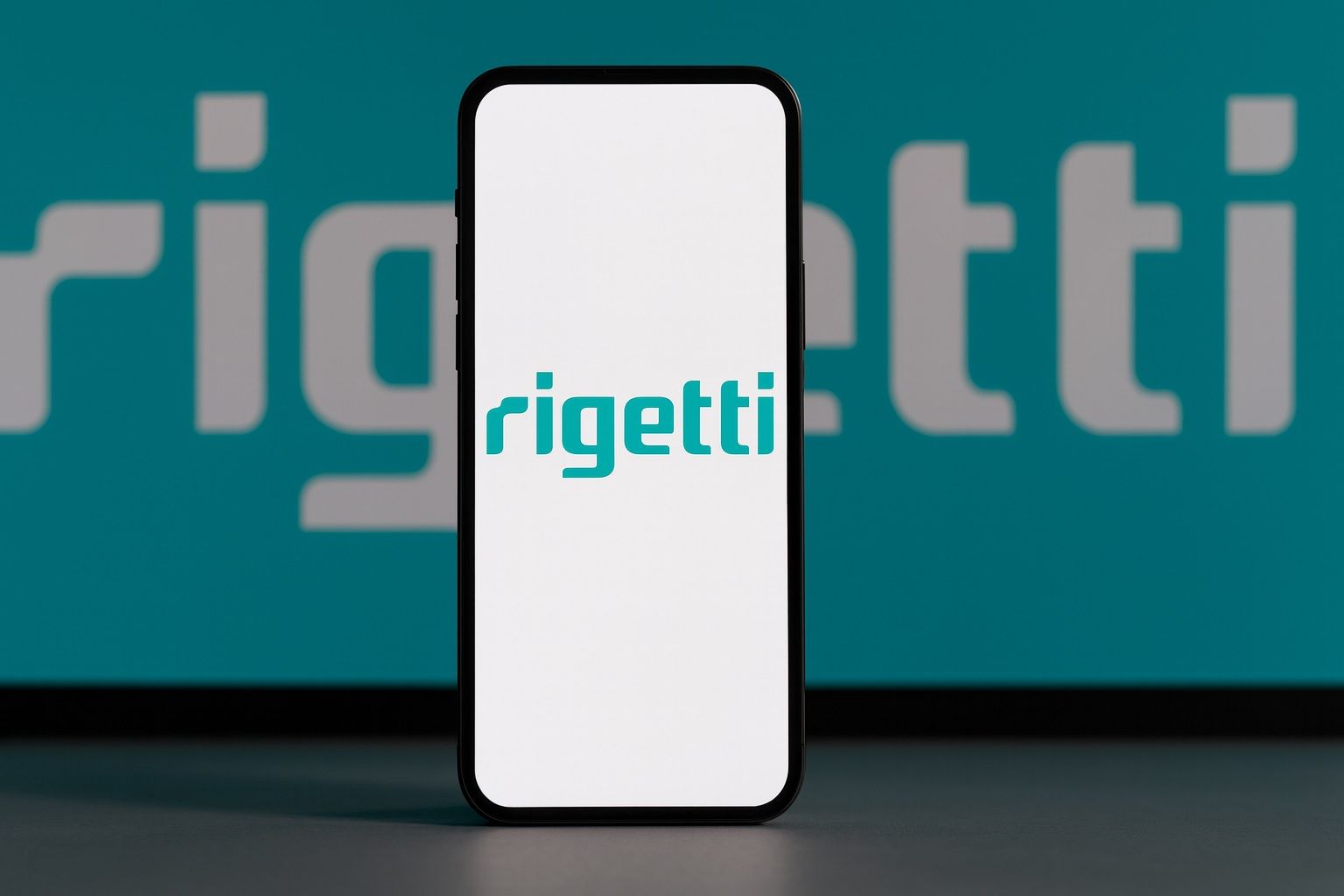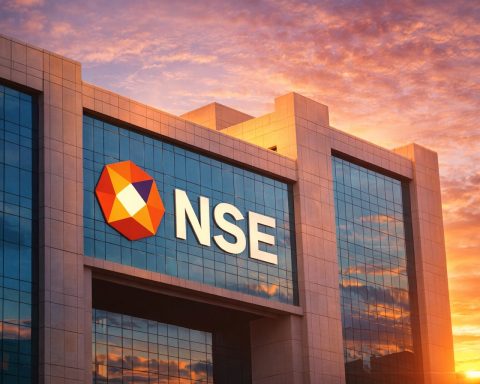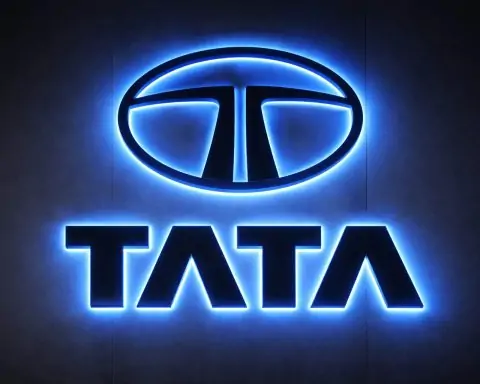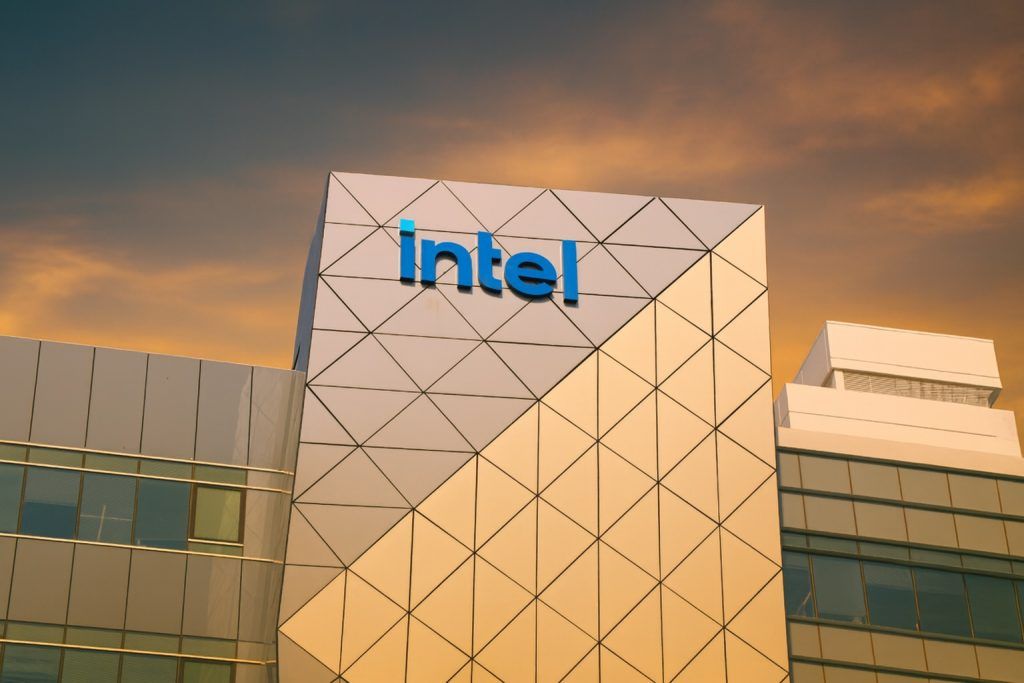- Explosive Rally: Rigetti Computing (NASDAQ: RGTI) stock has surged from under $1 in early 2025 to about $56 by mid-October (a ~5,000% gain) [1]. The rally pushed its market value into the ~$16–18 billion range [2], despite the company making only ~$8–10 million in annual revenue [3].
- Major Contracts & Tech Breakthroughs: Recent wins underpin investor excitement. In late September, Rigetti won a $5.8 million U.S. Air Force contract and $5.7 million in purchase orders for its 9‑qubit Novera systems [4] [5]. It also unveiled a new 36‑qubit “Cepheus-1” processor (built from four linked 9‑qubit chips with ~99.5% two-qubit fidelity) [6]. These milestones (together ~$21M in deals) are a “tangible bridge between pilot contracts and long-term quantum ambitions,” analysts note [7].
- High Valuation vs. Tiny Sales: The stock trades at 1,500×+ sales [8] — an unprecedented multiple. It remains deeply unprofitable (Q2 ’25 revenue was just $1.8M with a $39.7M loss [9]), and its 2024 sales totaled only ~$10.8M [10]. The disparity has raised warnings of a speculative “quantum bubble” on Wall Street [11] [12].
- Analyst Sentiment: All seven Wall Street analysts covering RGTI rate it a Buy [13]. Notably, Benchmark’s David Williams recently lifted his price target to $50 from $20 [14]. However, the consensus 12‑month target (~$28 on TipRanks) is far below the current ~mid-$40 price [15]. Experts point out that the average target sits ~50% under RGTI’s trading levels, suggesting high expectations are already priced in [16] [17].
- Trading Spikes & Pullbacks: Trading volume has exploded with the rally. For example, on Oct. 13 roughly 167 million RGTI shares traded – more than double the typical daily volume [18]. That day saw RGTI jump 25% on heavy volume [19]. But the stock is volatile: on Oct. 16 it plunged ~15% intraday amid a broad market sell-off and profit-taking [20]. By the end of that week it had settled in the mid-$40s [21]. Traders note that with RGTI’s RSI near 85, the stock was technically “overbought” [22] and prone to a pullback.
- Robust Cash Reserves: Rigetti has shored up its balance sheet during the run. In mid-2025 it raised about $350 million in a stock offering, ending Q2 with roughly $572 million in cash and virtually no debt [23]. As CEO Subodh Kulkarni explains, the company has “an amazing team of the world’s top scientists and engineers… to deliver against our roadmap” [24]. This cash war chest funds R&D (its Fab-1 chip fabrication lab) and buffers against volatility – at the expense of diluting existing shareholders.
- Peers Also Soaring: Other “pure-play” quantum stocks have soared too: IonQ (NYSE: IONQ) is up ~700% YTD [25], and D-Wave (NYSE: QBTS) has jumped >2,000% [26]. IonQ, for example, has attracted huge capital: in early Oct. it announced a $2.0 billion stock raise (pricing shares at a 20% premium) to fund growth [27]. IonQ’s CEO Niccolo de Masi said this “$2B cash investment… accelerat[es] our quantum commercialization worldwide” and is “the largest… investment in the history of the quantum industry” [28]. Similarly, D-Wave reported 42% Q2 revenue growth and $819M cash after recent offerings [29]. The entire sector is riding a wave of hype – which boosts all these stocks but also raises bubble concerns.
Record Run and Sharp Reversal
In 2025 Rigetti’s stock became one of the year’s wildest stories. As of Oct. 19, RGTI trades in the mid-$40s, having earlier hit an all-time high ~$56.34 on Oct. 15 [30]. That marked roughly a 50‑fold gain over its price a year earlier – a staggering climb fueled by “quantum computing fever,” as TechStock² (TS2) reports [31]. In one week RGTI rocketed from the mid-$40s to the mid-$50s, including a single-day surge of ~25% on Oct. 13 [32]. This frenzy put Rigetti’s market cap at roughly $17B (again, on single-digit millions in revenue) [33].
Investors piled in on the sector as a whole: TS2 notes “IonQ is up roughly 700%” and “D‑Wave has surged over 2,000%” in 2025 [34], as traders speculated on a coming quantum computing breakthrough. However, the rally has already proved bumpy. On Oct. 16 RGTI fell sharply (as did other “Quantum Four” stocks) [35]. This pullback had no new negative news on Rigetti itself, but came amid broader market turmoil: a regional bank fraud scare prompted investors to take profits in speculative tech names [36]. With RGTI technically overextended, traders “hit the brakes” [37]. TS2 wryly summarizes the situation: after an “unbelievable climb,” RGTI got a reality check – “even quantum-fueled rockets don’t go up in a straight line forever” [38].
Big Deals and Tech Milestones
The optimism around Rigetti is grounded in recent tangible progress. In September 2025 Rigetti announced two landmark orders: a $5.8M multi-year U.S. Air Force Research Lab contract (with Dutch partner QphoX) for superconducting quantum networks, and $5.7M in purchase orders for two on-premises Novera quantum computers [39] [40]. (These new systems will arrive in 2026 for academic and industrial R&D.) While the sums are small compared to tech giants, each deal equates to about 70–80% of Rigetti’s annual revenue [41] – a huge vote of confidence that moved the stock up double-digit percentages on the news [42]. Rigetti’s CEO Subodh Kulkarni told Benzinga that the contracts – $21M in all for 2025 – “show progress toward [our] goal of a 1,000+ qubit, error-corrected system” [43] [44]. He also praised the company’s strong team, saying “we have an amazing team of the world’s top scientists and engineers… to deliver against our roadmap” [45].
On the technology front, Rigetti’s R&D is advancing rapidly. In August 2025 it unveiled its “Cepheus-1” 36‑qubit processor (four linked 9-qubit chips) [46]. This boosted its computational power dramatically – doubling prior benchmarks and slashing two-qubit error rates to ~0.5% [47]. Kulkarni emphasized that “quadrupling our chiplet count and significantly decreasing error rates is the clear path towards quantum advantage and fault tolerance” [48] [49]. The Cepheus-36Q system was deployed on Rigetti’s Quantum Cloud Services in Q3 and is available via Microsoft’s Azure Quantum marketplace [50], enabling enterprise and academic users to run experiments on the new hardware.
Rigetti is also building an ecosystem of partnerships. Notably, Taiwan’s Quanta Computer invested $35 million in Rigetti as part of a larger $100M+ deal to help scale up production [51]. Rigetti signed an MoU with India’s C-DAC to develop quantum-classical computing initiatives [52], and delivered its first Novera system to Montana State University for a new research center [53]. It even announced a collaboration with NVIDIA to combine quantum processors with NVIDIA’s GPUs and software [54]. In Benzinga’s view, these moves “expand Rigetti’s credibility and footprint” and show it is “moving beyond lab experiments” into real-world deployments [55].
Fundamentals & Financials
Despite the hype, Rigetti remains in early commercialization. Its reported financials are modest. As noted above, full-year 2024 revenue was only ~$10.8M [56], and Q2 2025 brought just $1.8M (down 42% YoY) [57]. The company is heavily loss-making: Q2 net loss was $39.7M [58], and 2024 net loss ~$201M [59]. Gross margins have actually eroded (Q2 ’25 was 31% vs 64% a year earlier [60]) as Rigetti continues to invest in R&D and go-to-market. In short, traditional valuation metrics like P/E are meaningless (Rigetti has no earnings), and even its price/sales ratio (~1,500×) is “virtually unheard of outside of speculative bubbles” [61].
The silver lining is a strong cash position. Leveraging its inflated stock price, Rigetti raised new capital in mid-2025 (an ATM offering raised ~$350M) [62]. It ended Q2 with about $572 million on hand and zero debt [63] – giving it plenty of runway to fund development. Analysts expect this cash will allow progress on the four-year roadmap to continue, even if profits are far off. Zacks Research notes that for now RGTI is a “long-term capital play” focused on steady engineering advances, not near-term earnings [64] [65]. Q3 guidance is expected to reflect only incremental growth: Street forecasts call for about $2.4M in revenue (flat year-on-year) and a $0.05-per-share loss [66], implying more of the same.
Market Reaction and Expert Views
Investor sentiment has been a rollercoaster. After the recent pullback, TS2 points out RGTI remains up ~5,000% year-over-year [67]. That dramatic gain has drawn cautionary notes. Analysts acknowledge Rigetti’s promise but warn of overvaluation. As TS2 summary notes, industry experts say the quantum boom “may be unsustainable,” and with targets far below current prices they foresee a pullback once “reality catches up with hype” [68]. Technical observers at StockInvest.us similarly flagged RGTI as overbought (RSI 82) on Oct. 13, predicting consolidation after the 25% spike [69] [70].
Yet some prominent voices remain optimistic. For example, Benchmark’s David Williams highlighted Rigetti’s “expanding ecosystem” and deals when keeping his Buy rating [71]. Moreover, industry insiders emphasize that, regardless of near-term volatility, Rigetti is making measurable progress. “After verified execution across contracts, chip architecture, and fabrication,” Benzinga concludes, “investors can track measurable progress… on the four-year path toward quantum advantage — without speculating beyond the facts” [72].
Competitive Landscape
Rigetti is often compared to peers IonQ and D-Wave, but the companies have different technologies and scale. IonQ (trapped-ion technology) has far more revenue ($107M in 2024 vs Rigetti’s ~$11M) and is rapidly growing – its stock has roughly octupled in 2025. IonQ recently announced that a major institutional investor will buy $2.0B of new shares at a premium [73]. CEO Niccolo de Masi said this influx will “accelerate our quantum commercialization worldwide” and is “the largest…investment in the history of the quantum industry” [74]. D-Wave (annealing tech) saw a 42% YoY sales jump in Q2 and just deployed its new Advantage2 system; its CEO Alan Baratz described the quarter as “consistently strong performance” and noted a record $819M cash hoard [75].
In comparison, Rigetti’s achievements are at a much smaller scale – but they are unique in the superconducting circuit approach. Investors who believe in a diversified quantum future point to Rigetti’s full-stack platform and government customers as positives. Still, even Rigetti’s backers admit this is a long game. As one analyst puts it, RGTI’s path depends on continuing to land contracts and hit technical milestones; until then, the stock will likely ride the waves of hype and sentiment [76] [77].
Outlook
As of Oct. 19, 2025, Rigetti’s stock reflects an uneasy balance of euphoria and caution. It has delivered some of the quantum sector’s biggest recent gains, driven by real developments – but its valuation assumes much more to come. With big tech players and governments increasingly betting on quantum, Rigetti may continue attracting speculative capital. However, if the quantum revolution takes longer than hoped, even RGTI’s “amazing team” and war chest might not justify its share price in the near term. In the words of a Fast Company analyst, “What happens next is anyone’s guess” [78] – for now, investors will be watching every contract win, chip demo, and quarterly report for clues on which way the pendulum will swing.
Sources: Recent reporting and analysis from TechStock² (TS2.tech) [79] [80], insider press releases, Benzinga [81] [82], Fast Company [83] [84], TipRanks [85] [86], Zacks/Nasdaq [87] [88], Insider Monkey [89] [90], and company filings/PRs [91] [92]. Each insight is connected to original reporting as cited above.
References
1. ts2.tech, 2. ts2.tech, 3. ts2.tech, 4. ts2.tech, 5. ts2.tech, 6. ts2.tech, 7. www.benzinga.com, 8. ts2.tech, 9. ts2.tech, 10. ts2.tech, 11. ts2.tech, 12. ts2.tech, 13. ts2.tech, 14. www.tipranks.com, 15. www.tipranks.com, 16. ts2.tech, 17. www.tipranks.com, 18. stockinvest.us, 19. stockinvest.us, 20. ts2.tech, 21. ts2.tech, 22. ts2.tech, 23. ts2.tech, 24. www.benzinga.com, 25. ts2.tech, 26. ts2.tech, 27. investors.ionq.com, 28. investors.ionq.com, 29. thequantuminsider.com, 30. ts2.tech, 31. ts2.tech, 32. ts2.tech, 33. ts2.tech, 34. ts2.tech, 35. ts2.tech, 36. ts2.tech, 37. ts2.tech, 38. ts2.tech, 39. ts2.tech, 40. ts2.tech, 41. ts2.tech, 42. ts2.tech, 43. www.benzinga.com, 44. www.benzinga.com, 45. www.benzinga.com, 46. ts2.tech, 47. ts2.tech, 48. ts2.tech, 49. ts2.tech, 50. ts2.tech, 51. ts2.tech, 52. ts2.tech, 53. ts2.tech, 54. ts2.tech, 55. ts2.tech, 56. ts2.tech, 57. ts2.tech, 58. ts2.tech, 59. ts2.tech, 60. ts2.tech, 61. ts2.tech, 62. ts2.tech, 63. ts2.tech, 64. www.nasdaq.com, 65. www.nasdaq.com, 66. www.nasdaq.com, 67. ts2.tech, 68. ts2.tech, 69. stockinvest.us, 70. stockinvest.us, 71. www.tipranks.com, 72. www.benzinga.com, 73. investors.ionq.com, 74. investors.ionq.com, 75. thequantuminsider.com, 76. ts2.tech, 77. ts2.tech, 78. www.fastcompany.com, 79. ts2.tech, 80. ts2.tech, 81. www.benzinga.com, 82. www.benzinga.com, 83. www.fastcompany.com, 84. www.fastcompany.com, 85. www.tipranks.com, 86. www.tipranks.com, 87. www.nasdaq.com, 88. www.nasdaq.com, 89. www.insidermonkey.com, 90. www.insidermonkey.com, 91. thequantuminsider.com, 92. investors.ionq.com







